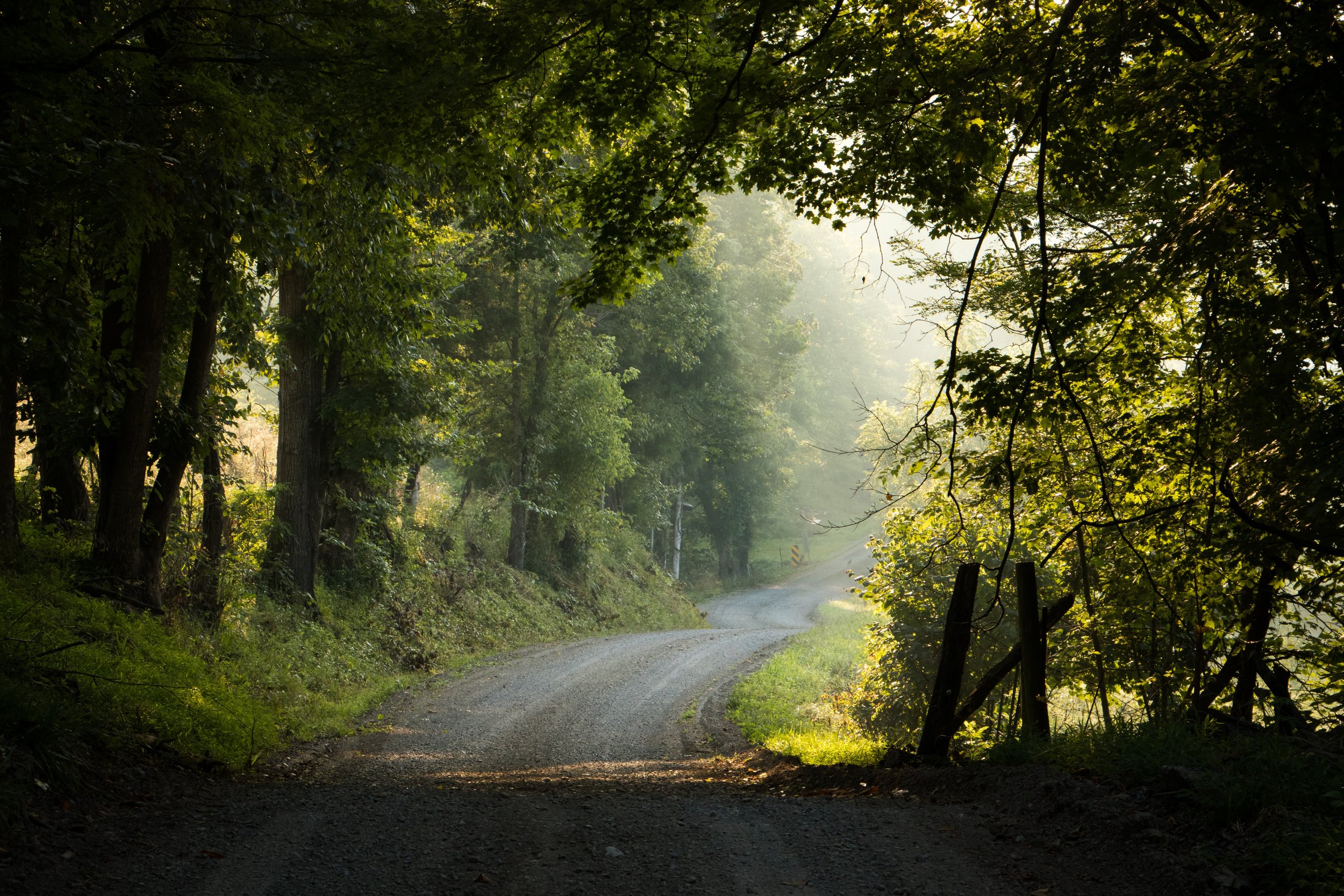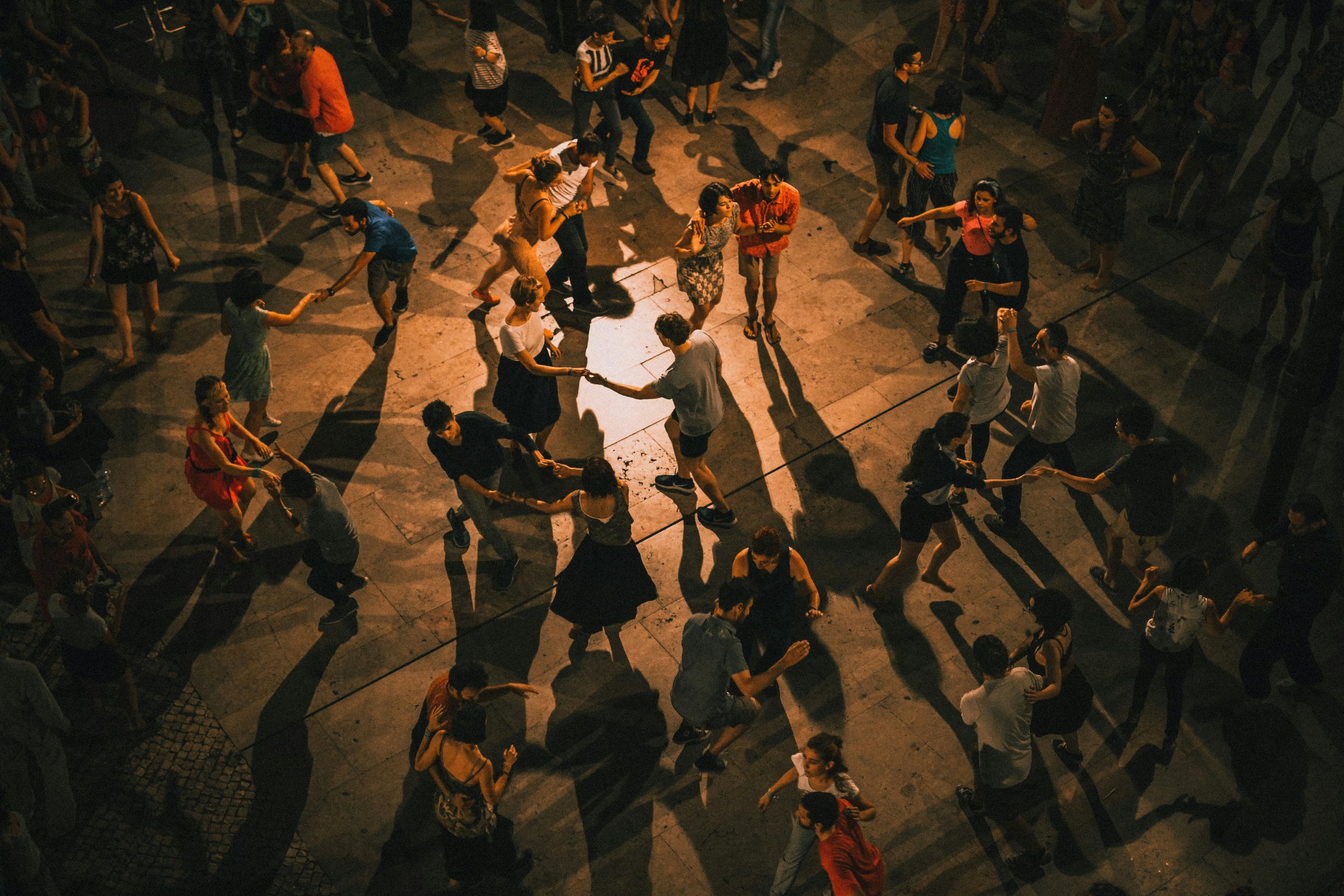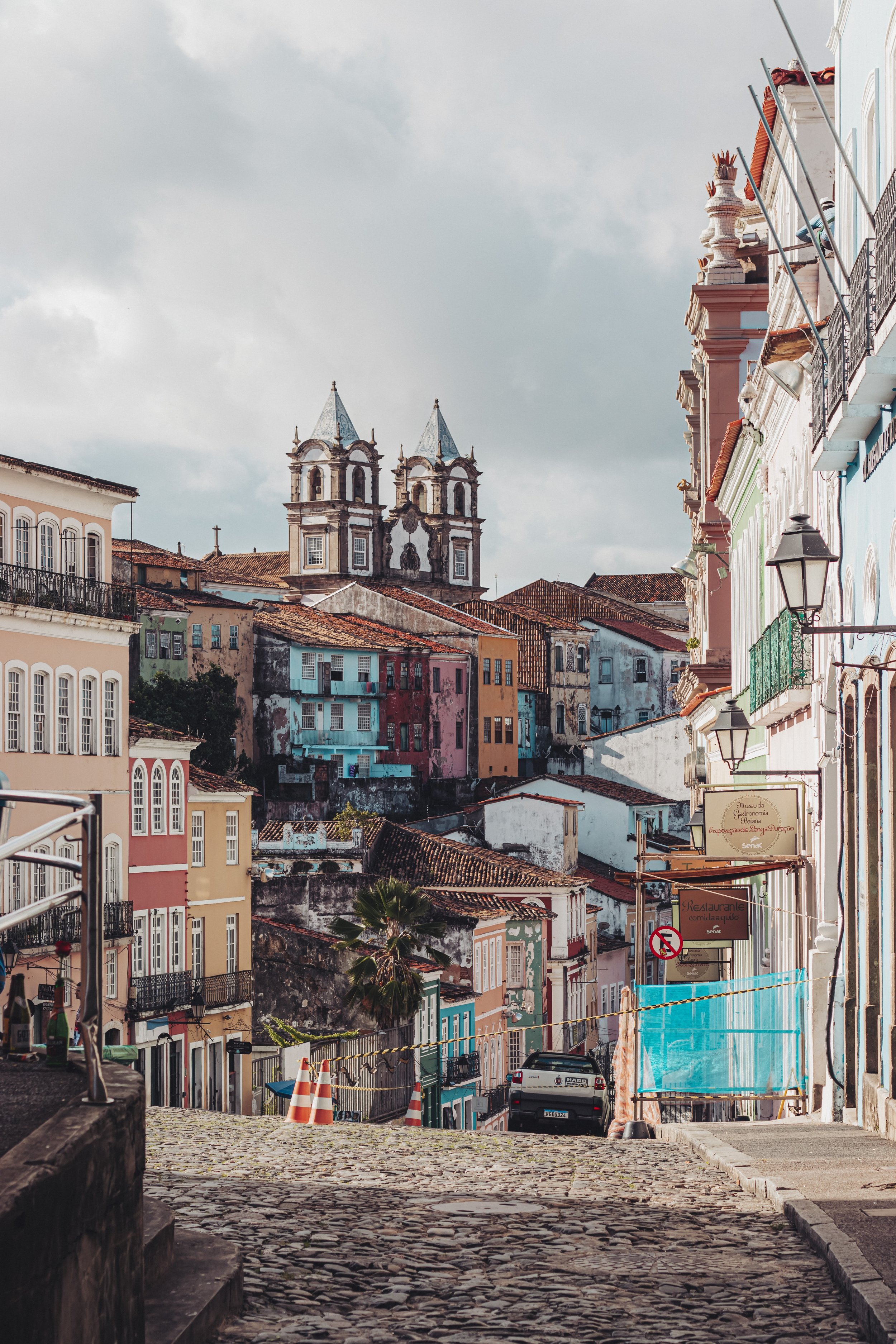Dolores: Listening to The Cranberries in Virginia

On a bright, icy afternoon in early January 1999, I walked down the cement steps from my middle school towards my mother’s burgundy Ford Taurus, tossed my backpack into the backseat, and took my place in the front, moving a juice box and a bag of popcorn from the seat into my lap. The deep blue sky filtered through the great trees that lined the soccer field; stray leaves spiraled downward from the branches intertwining cathedral-like above. I was thirteen years old.
Driving over the great granite bridge that led towards home, my mother, without preamble, told me she had sad news to share: the older brother of one of my elementary school classmates, just sixteen, had killed himself that morning. She mentioned something about a note, a light below the door late at night, a funeral at our church just up the hill. I knew the boy by sight, though we’d never spoken. He was handsome, popular, an athlete, lived in a grand white Antebellum-style mansion over by the country club on the south side of town. I knew what suicide was, but it hadn’t occurred to me that it was something people I knew actually did. What I remember most from that afternoon is the sudden heaviness of my head, the way I could no longer hold it up from one moment to the next, my blonde ponytail cascading backwards as it connected with the headrest behind. It wasn’t the boy’s death that had such a hold on me, or not just that: it was the dawning awareness of an internal agony I had never known but which I would grow intimately familiar with in the years that followed. I have never quite let go of that weight.
“I’ve often heard that someone who plays one song over and over is going through something; if the saying is true, I’m always going through something, repeating the songs I love until I know each word by heart.”
That night, and for many nights after, I tucked myself away in my bedroom and inserted a dark green CD into my boombox, The Cranberries’ first album, Everybody Else is Doing It, So Why Can’t We? It was one of ten or twelve CDs I owned, having worked my way backwards in time from the band’s third album, which I’d won at a school fair in fifth grade. I’ve often heard that someone who plays one song over and over is going through something; if the saying is true, I’m always going through something, repeating the songs I love until I know each word by heart. Certainly, that evening I was.
Everybody Else is Doing It is a collection of heartbreak songs; the best-known single, “Linger,” is The Cranberries at their most sanguine, which is to say not very. But the song I gravitated towards was the album’s first, “I Still Do,” Dolores O’Riordan’s keening ode to lost love. In the album’s cover photo, fragile, ivory-skinned, barefoot Dolores and her bandmates sit together on a battered couch in the dark. The three men stare at the camera; Dolores looks down, her black hair parted, her brows knitted, half her face lost in shadow. She has not yet buzzed her hair or donned Doc Martens, as she will for her second studio album. She’s barely 21.
The name Dolores, of course, means pain, a strange quality to confer willingly on one’s child, though perhaps less so for the vast swaths of the Catholic world where suffering confers a saintly, otherworldly dignity, especially to women who might not otherwise be granted it. Dolores’s pain asserts itself in the mournful, dirge-like progression of “I Still Do”—I'm not ready for this / Though, I thought I would be / I can't see the future / Though, I thought I could see. Her voice haunted me most, wailing in wordless sound, soaring far past the melancholy strum of bandmate Noel Hogan’s guitar: expansive, angelic, fit to fill cathedrals. It was—still is— the saddest, loveliest voice I had ever heard, bringing me, in the course of that evening in January 1999, to weep for the death of someone I hardly knew.
A week later, I took our little yellow cocker spaniel for an afternoon walk and positioned the two of us behind a tree across the street from our church. I did not know the family well enough to attend the funeral, could not have articulated why I’d have wanted to, and, in any case, I couldn’t have fit inside the crowded church. The crush of black-clad mourners held open the great wooden doors, pressing their way into the vaulted white nave as light snow fell upon us all like lace. Surreptitiously, I peered around the old oak tree, chided my dog to heel. I wanted to see inside the church, inside the coffin—though we Episcopalians preferred cremation—inside the brain of the dead boy. Something pulled me forward, this force with a gravity all its own. I wanted to know what it was like to want to die.
*
“When I played her albums late into the night in my pink and white bedroom, the elegant shape of her wails giving form to my own, she showed me how sadness could be beautiful, how I could learn to live inside of it.”
The Cranberries emerged from Limerick, Ireland, at the height of the grunge years. By their second album, they looked more like the other musicians of their day: black leather, combat boots, bleached hair. MTV and our local rock radio station played their music alongside bands of mostly men, mostly from Seattle: Pearl Jam, Nirvana, Alice in Chains, Nine Inch Nails. I liked grunge, too, mostly because my fifth-grade crush loved Kurt Cobain. The music was dark and heavy and new, with a strange undercurrent of sex and drugs and filth. Dolores, though equally as dark, sounded nothing like them. A devout Catholic, she had trained in competitive Irish choirs and on the organ at her local church in Ballybricken, County Limerick. She preserved a distinctive, deeply Gaelic lilt in her voice and a yodeling call that cut the air like a crisp wind from the north. I pictured her running in the green fields of grass and clover stretching out toward the gray Irish sea, not in some dingy basement in the Pacific Northwest shooting heroin. For me, there was no one like her: an iconoclast, both of her era and not at all. When I played her albums late into the night in my pink and white bedroom, the elegant shape of her wails giving form to my own, she showed me how sadness could be beautiful, how I could learn to live inside of it. I would look out my window, the lanterns of the Presbyterian church across the way blinking through the leaves of the great old Catalpa tree in our yard, and look north, towards the end of town and the great city beyond it. I dreamed of growing up, of belonging, of one day feeling less acutely alone than I did just then.
*
Four years later, at seventeen, I met the first man I ever fell in love with, a handsome liar with a wife and daughter he neglected to mention, the great shattering that marked the end of my childhood. In the affair’s aftermath, I went three weeks without sleeping, feared I’d never sleep again, in fact, feared everything: sunlight, noise, crowds, my suddenly fragile-seeming body. One day, I pulled over my car and clawed at my forearm with my fingernails, desperate to let the darkness out, but too scared to attempt any more serious form of self-harm. I was diagnosed with Major Depressive Disorder, and while the relationship I’d just ended was the clear catalyst, I sensed the seeds of that melancholy had been planted long before. Even now, I struggle to put my finger on exactly when. Changing schools in seventh grade? The onset of my mother’s chronic illness when I was six? Birth? Or even before that—some susceptibility coded deep in my genes?
I was a serious child, often suffering in silence, lost deep in my own mind. I’ve spent many years of my life in therapy, probing old memories for the key that might unlock the source of my pain, make it stop—but I resurface with nothing so tangible. I circle around, instead, to the particular heaviness of my head that day in my mom’s car, the way I felt suddenly connected to some darkness far greater than me, a first glimmer of recognition. And how I went straight home to my room to be alone with that lovely, mournful voice, as beautiful as it was sad, as sad as it was beautiful, to try to make sense of what was happening to me.
*
Dolores was found dead in a London bathtub on January 15, 2018. She was 46. I was 32, at a low point in my own life, burying myself in my mindless marketing job and taking 3 a.m. Ubers home from the office to crawl into bed beside a sleeping body I was no longer in love with. I didn’t want to die, exactly; the most acute years of my depression were behind me. More accurate was the joke I often made, that I was dead inside, living a life I’d let happen to me, with no real feeling left in it. I learned of Dolores’s death on my phone, sitting alone in bed in my dingy Brooklyn apartment with a broken furnace. Under the covers, I shivered reading the death announcement, frustrated by its vagueness: Dolores was found lifeless in the tub, empty single-serve liquor bottles and containers of prescription drugs littering the room. I combed Instagram, Twitter, the New York Times, the Guardian for more information, propelled by a strange sense of urgency I didn’t stop to name. When the U.S. and U.K. media didn’t satisfy me, I switched to the Irish Times, reading obsessively, learning that Dolores was sexually abused as a child, that during the years when The Cranberries were most famous, she found all her old ghosts coming back to haunt her, struggling with anorexia, with alcoholism, with depression. I hadn’t read any of this backstory before, but I hadn’t needed to—the pain suffused all her music. Still, I found no answers to the questions I so urgently wanted to know: Was it suicide? And if so, why, why did she do it?
Friends I grew up with tweeted links to her songs, photos, tributes, a YouTube video of her with Luciano Pavarotti singing “Ave Maria” in Italy, her Irish brogue warping the Latin Rs, her voice trilling, her face placid for once, suffused with devotion. I stayed silent, wondering how to encapsulate all she had once meant to me, as the news moved on to other stories. Clicking through photos of the memorial service in her hometown of Ballybricken, I zoomed in on paparazzi shots of the grieving faces of her mother and children, of her grave in the churchyard beside her beloved father’s. I kept insisting to myself, like a mantra, “She was the voice of my childhood,” remembering Dolores emanating from the tape deck on the long morning drives up the lush, green parkway to school, her voice looping in my head on that day outside the church. In the months that followed her death, as my own life came apart, as I left my job and the man I’d spent the past six years beside, I looked periodically for updates. Eventually, I read that Dolores’s death had been ruled an accident, though she had attempted suicide in the past. In a voicemail she left a friend a few hours before her death, she reportedly sounded upbeat and optimistic; she was working on new music and told friends she was excited to get back in the studio. Still, to drown in a bathtub after a night of drinking alone does not suggest a life of great happiness. I could not help but think what a waste it was, to die like that, leaving this ugly world uglier without her voice.
*
The summer my relationship ended, I moved into a bright, empty apartment in north Brooklyn, a fourth-floor walkup nestled in the highest branches of a looming Catalpa. It was the same tree I’d had outside my window in Virginia, with white blossoms like crumpled tissues and great green dangling pods between the leaves. At night, I would watch the darkening sky beyond its branches, emitted long, low wails as I found myself once again alone and lonely. But in the mornings, I began to make art of my own for the first time in seventeen years: delicate charcoal sketches and then, when I felt ready, my first meager attempts at writing.
“It seems a far more radical act to write and sing and move towards joy instead.”
To keep me company, I played The Cranberries at full volume and remembered who I had always been, not just a melancholy child but a sensitive dreamer full of feelings too big to hold. How could I make room for these feelings now? And what to make of the fact that the voice of my childhood was a woman whose pain was encoded in her name, in her voice, in the very arc of her life? I confess I struggle, now, with the concept that pain is righteous or clarifying or ennobling. I used to think so, but then I felt so much of it that I just wanted to learn how to let it go.
The first step, it seemed to me, was to stop finding suffering so interesting, to stop attaching myself so firmly to my depression, and to the forms of art that venerated sadness. I worried these ideas kept me locked in my melancholy, made me overvalue it. It seems a far more radical act to write and sing and move towards joy instead; to see a young boy’s suicide for the tragedy it was, a senseless loss, and to be thankful I avoided following him. Why, then, can I not quite let Dolores go, her music so often echoing through my apartment, my voice rising alongside hers? It is only lately that I find cultivating joy in my life possible, that I believe enough in my own voice to write something of what I’ve lived. It took twenty years, ten antidepressants, five therapists—give or take a few on all counts—to get here, to a place where I can play The Cranberries on the stereo as I brew my morning coffee, singing along with the melody without letting Dolores’s voice sweep me under. In the years until I got here, she’d shown me again and again how beauty might live inside sadness. To find it beautiful was, I think, how I learned to survive it.
ABOUT THE AUTHOR
Diana Heald is a writer based in Brooklyn, where she's currently pursuing an MFA in Writing at Columbia University and working on a book about depression and big pharma. You can find her on Twitter at @diana_heald.
Read Diana’s “Behind the Essay” interview in our newsletter.
Header photo by Matthew Lancaster
Edited by Aube Rey Lescure.










At the end of August 2023, I flew to Indianapolis where my friend, the artist Kate Parnell, picked me up in her mom’s silver Hyundai Sonata of late-90s vintage. It maxed out at 62 mph. Above the license plate, Kate had stuck a bumper sticker that read “Garfield from Memory,” the name of a four-year art project that had become her full-time job. The tagline: “The great thing about painting Garfield from memory is no one can tell you you’re wrong.”